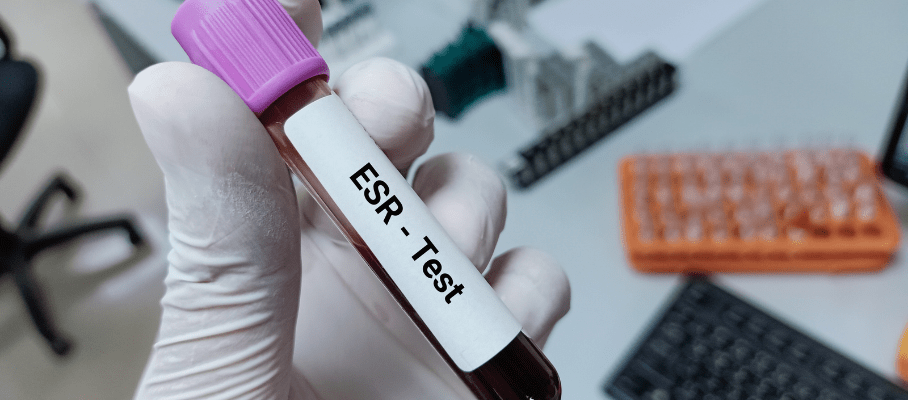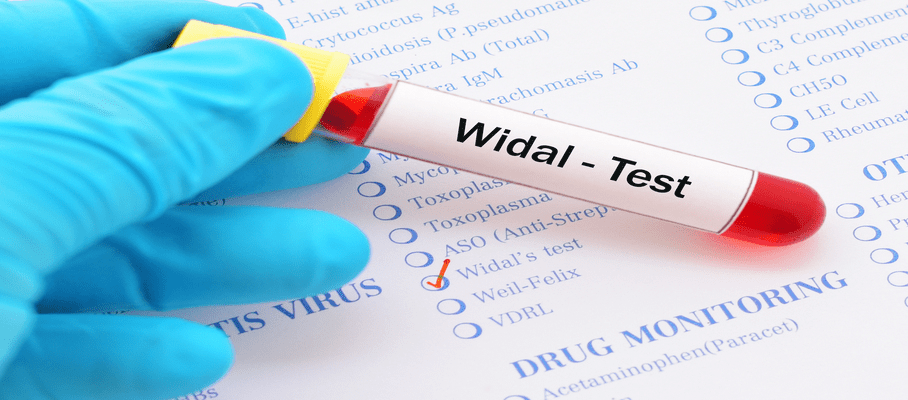Preventive Healthcare
Harlequin Ichthyosis (HI): A Rare Genetic Skin Disorder Explained

Table of Contents
When faced with something as unfamiliar as Harlequin Ichthyosis, it’s natural to feel a mix of confusion, fear, and determination. You may be searching for answers, hoping to understand what lies ahead. This rare genetic condition, though serious, is not without hope. Today, more than ever, knowledge, support, and medical care are changing outcomes and easing journeys.
This blog is designed to guide you through essential information—what causes it, how it’s diagnosed, and what treatments exist.
What is Harlequin Ichthyosis (HI)?
Harlequin Ichthyosis is a severe, rare genetic skin disorder that affects the way your skin develops and protects your body. At birth, babies with this condition have thick, hard skin that forms large, diamond-shaped plates separated by deep cracks. These plates restrict movement and can affect breathing, eating, and even the ability to close the eyes or mouth.
The condition is caused by mutations in the ABCA12 gene, which plays a vital role in the normal development of the skin barrier. This gene helps transport lipids (fats) necessary for skin cells to function and form correctly.
When this process is disrupted, the skin becomes excessively dry and scaly. Despite its challenges, advances in Harlequin Ichthyosis treatment have significantly improved outcomes and survival rates.
How Rare is Harlequin Ichthyosis?
Harlequin Ichthyosis is extremely rare, affecting approximately 1 in 300,000 births worldwide. It is inherited in an autosomal recessive pattern, meaning both parents must carry the faulty gene for a child to be affected. Because of its rarity, many people – including healthcare professionals – may never encounter a case in their careers.
This rarity often leads to delays in diagnosis and treatment. However, awareness has grown thanks to medical research and advocacy, making early diagnosis and care more accessible than ever before.
Harlequin Ichthyosis (HI) Causes
Harlequin Ichthyosis is caused by mutations in the ABCA12 gene, which is essential for the formation of the outer layer of the skin. This gene provides instructions for producing a protein that helps transport lipids in skin cells.
- Genetic Mutation: The ABCA12 gene mutation disrupts the skin's ability to form a protective barrier. Without this barrier, the skin becomes thick, cracked, and unable to retain moisture or block harmful substances.
- Autosomal Recessive Inheritance: The condition is inherited when a child receives one mutated gene from each parent. Carriers usually do not show symptoms but can pass the gene to their children.
- Prenatal Influence: If both parents are known carriers, there’s a 25% chance with each pregnancy that the baby will be affected. Prenatal testing can help identify the condition before birth.
- Protein Transport Defect: The faulty ABCA12 gene means lipids can’t be delivered to the skin’s outermost layer. This causes the skin to harden and form scale-like plaques from birth.
- Environmental Interplay: While the root cause is genetic, environmental conditions like temperature, humidity, and infection risk can aggravate the symptoms or delay healing in affected individuals.
Symptoms Of Harlequin Ichthyosis (HI)
The symptoms of Harlequin Ichthyosis are usually noticeable at birth. Babies are born encased in thick, plate-like skin with deep fissures. These physical signs are often severe and can lead to medical complications.
- Skin Thickening and Cracking: The most prominent feature is the presence of hard, plate-like scales that crack and bleed. These plates restrict movement and can pull on facial features.
- Facial Deformities: The thick skin distorts facial features, pulling the eyelids outwards (ectropion), turning the lips inside out (eclabium), and flattening the nose.
- Difficulty with Feeding and Breathing: The rigid skin can impair breathing due to limited chest expansion, and make feeding challenging, requiring medical support like feeding tubes.
- High Risk of Infection: Cracks in the skin create open wounds, which can serve as entry points for bacteria, increasing the risk of life-threatening infections.
- Temperature Regulation Issues: The damaged skin barrier affects the body's ability to regulate temperature, making babies more vulnerable to overheating or hypothermia.
- Eye and Mouth Irritation: Due to ectropion, eyes remain exposed, leading to dryness and infections. Similarly, constant lip exposure causes feeding and oral hygiene problems.
Diagnosis & Testing
Early and accurate diagnosis of Harlequin Ichthyosis is vital for initiating life-saving care. Diagnosis can occur before or after birth, and involves multiple methods ranging from imaging to genetic tests.
Prenatal Testing
Prenatal diagnosis can be pursued if there's a known family history or both parents are confirmed carriers.
- Chorionic Villus Sampling (CVS): Performed between 10-13 weeks of pregnancy, CVS tests a sample of placental tissue to detect ABCA12 gene mutations.
- Amniocentesis: Conducted around 15-20 weeks, it tests the amniotic fluid for the same genetic mutations, offering high accuracy with minimal risk.
- Ultrasound Scans: In later pregnancy stages, high-resolution ultrasounds might show signs like abnormal limb positioning or facial features, prompting further genetic testing.
Postnatal Clinical Examination
In newborns, the condition is typically obvious due to visible skin abnormalities.
- Physical Appearance: The newborn’s thick, hardened skin and diamond-shaped fissures are usually sufficient to raise suspicion immediately after birth.
- Respiratory and Feeding Assessment: Babies may struggle with breathing and feeding, requiring support from a neonatal intensive care unit.
- Skin Biopsy (rarely needed): In uncertain cases, a skin sample might be tested for characteristic histological changes.
Genetic Confirmation
Confirming the diagnosis at the molecular level ensures appropriate treatment and counselling.
- ABCA12 Genetic Testing: A definitive test that detects mutations in the ABCA12 gene. It can be performed using blood or tissue samples.
- Family Genetic Mapping: If parents are confirmed carriers, this information supports diagnosis and helps plan future pregnancies.
- Whole Exome Sequencing (if needed): In rare cases where symptoms resemble other skin disorders, broader genetic analysis can identify less common variants.
Differential Diagnosis
Because Harlequin Ichthyosis shares features with other skin disorders, differentiating it is crucial.
- Lamellar Ichthyosis: A milder form of ichthyosis that presents later and lacks the plate-like skin.
- Epidermolytic Hyperkeratosis: Also involves thickened skin, but differs in its blistering and genetic background.
- Netherton Syndrome: Presents with scaly skin and hair abnormalities, and has a different genetic profile.
- Other Neonatal Skin Disorders: Conditions like congenital ichthyosiform erythroderma may initially appear similar but are usually less severe.
Treatment & Management
While there is no cure, Harlequin Ichthyosis treatment focuses on supportive care and symptom management. Treatment must begin at birth and continue lifelong, involving a team of specialists.
|
Area of Care |
Treatment Options |
|
Skin Management |
Regular use of emollients and moisturisers to prevent cracking. Gentle exfoliation helps remove scales. Humidified environments reduce dryness. |
|
Infection Control |
Antibiotics are administered to prevent or treat bacterial infections through skin fissures. Strict hygiene and sterile wound care are essential. |
|
Nutrition & Feeding |
Babies may require feeding tubes due to facial abnormalities. High-calorie diets support growth and healing. Nutritional supplements may be needed long-term. |
|
Respiratory Support |
Ventilatory support may be necessary if chest movement is restricted. Careful monitoring of oxygen levels ensures stable breathing. |
|
Eye & Oral Care |
Lubricating eye drops help prevent dryness and damage. Oral care includes gentle cleaning and, if needed, dental support for malformed teeth. |
|
Pain & Comfort Management |
Analgesics are used during skin treatments. Keeping the skin moist and protected helps reduce discomfort and friction injuries. |
|
Physiotherapy |
Movement may be limited early in life. Stretching exercises and physiotherapy help maintain mobility and prevent contractures. |
|
Psychological Support |
Emotional and mental health support for you and your family is essential. Support groups and therapy can help navigate social and emotional challenges. |
Prognosis & Life Expectancy
In the past, Harlequin Ichthyosis was often fatal within days after birth. Today, with improved neonatal care and early interventions, survival rates have increased significantly. Many children now grow into adulthood with a reasonable quality of life.
However, life expectancy varies depending on the severity of complications like infections, organ involvement, and access to care. With vigilant monitoring and a dedicated care plan, individuals can live fulfilling lives. The key lies in early diagnosis, ongoing skin management, and emotional resilience.
Living with Harlequin Ichthyosis
Living with Harlequin Ichthyosis can present unique challenges, but many families find strength and routine over time. As a parent or individual with the condition, you’ll become skilled in skin care routines, learn to manage flare-ups, and advocate effectively for healthcare needs. Support from healthcare teams, therapists, and other families in similar situations plays a vital role.
School, work, and social life may require some adjustments, but countless individuals lead enriched lives, participate in communities, and pursue their passions.
Research & Future Outlook
Exciting developments in genetics and dermatology continue to advance understanding of Harlequin Ichthyosis. Researchers are exploring gene therapy and better topical treatments to enhance skin function. Improved genetic testing has made earlier diagnosis possible, even before birth.
Newborn screening advancements are in development, offering hope for earlier interventions. Organisations and global research initiatives are also pushing for better awareness and support systems. With continued progress, the future looks brighter for individuals and families affected by this rare condition.
Conclusion
When properly educated and supported, Harlequin Ichthyosis is manageable. Getting early diagnosis, regular care, and being emotionally resilient can make a significant difference.
If you are considering genetic testing or need a trusted diagnostic partner, Metropolis Healthcare is a reliable choice. With advanced labs, expert professionals, and a commitment to accuracy, Metropolis Healthcare offers comprehensive testing services that can guide timely and informed decisions for you and your loved ones.






















